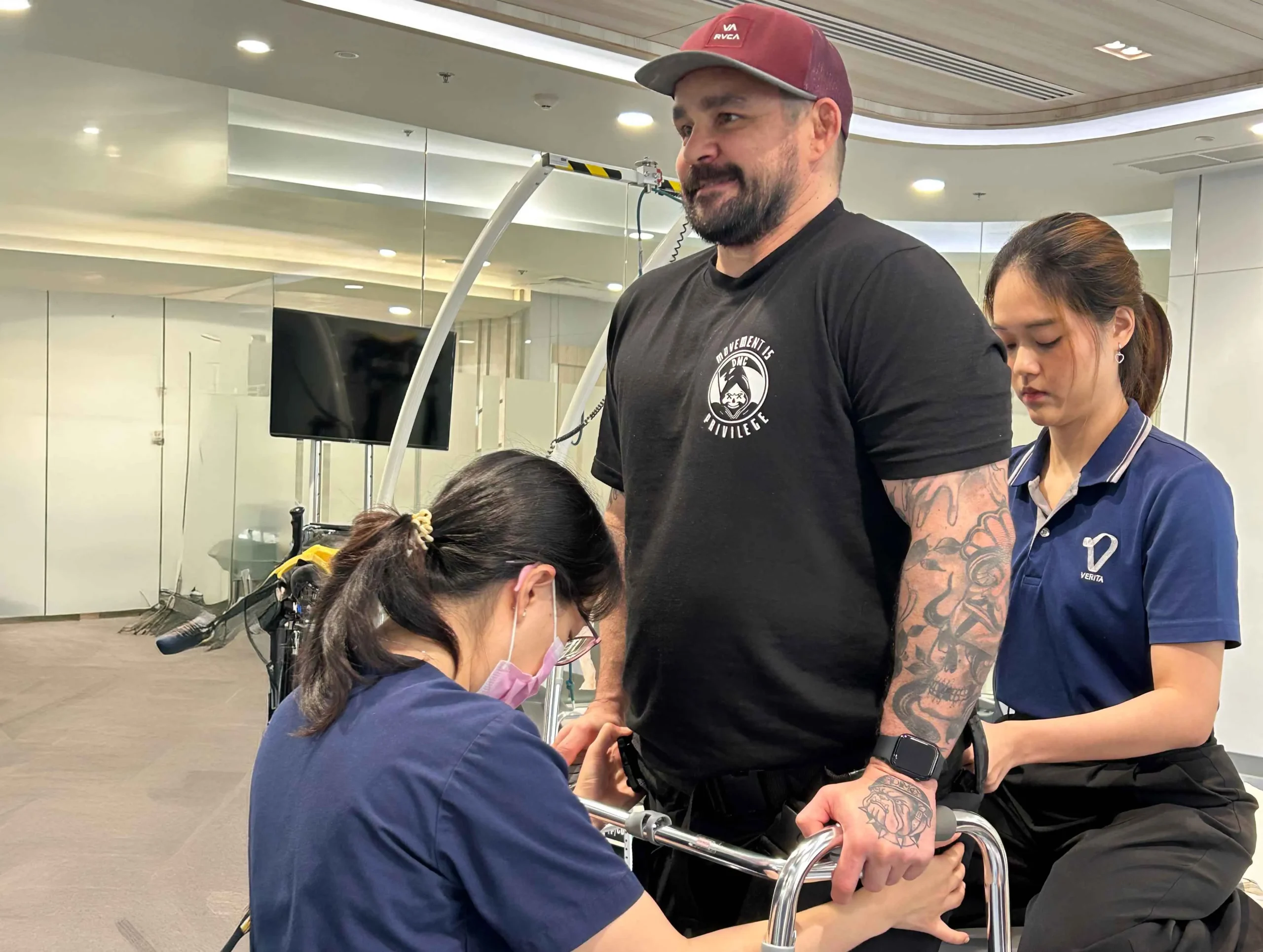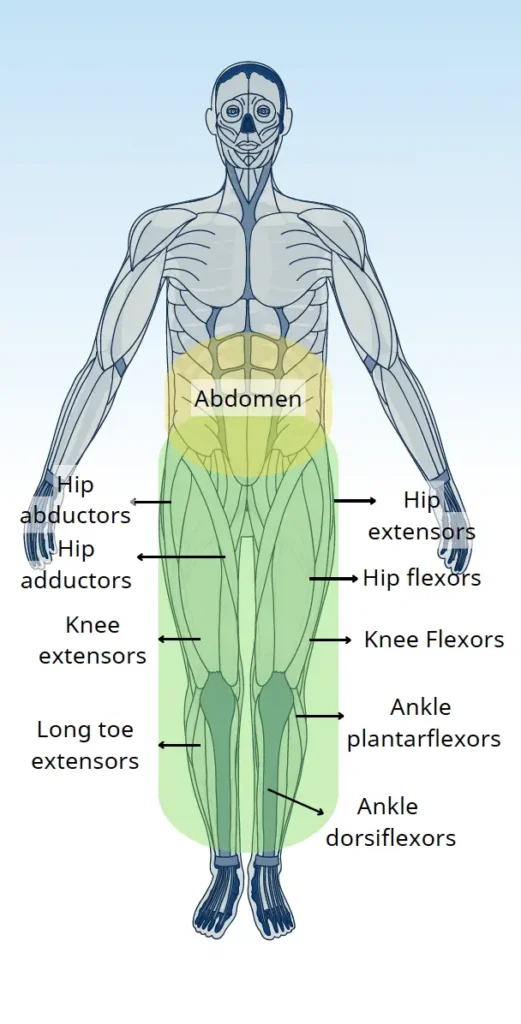Tylan
- Spinal Cord Injury (SCI),
- T6, Complete
Epidural Stimulation

| Treatment received | Implantation site | Number of devices | Duration of stay |
|---|---|---|---|
| Epidural Stimulation | Lumbar spinal cord | 1 | 35 days |
| Post-surgical care | Total sessions | Session per week | Time (Hr.) per session |
|---|---|---|---|
| Mapping | 110 | 20 | 1 |
| Physical therapy | 30 | 5 | 1 |
| Total sessions of rehabilitation | 140 |

| Muscle improvement | Before ES surgery | At discharge (35 days after ES surgery) |
|---|---|---|
| Hip flexors | 0 | 2+ |
| Hip extensors | 0 | 2+ |
| Hip abductors | 0 | 2 |
| Hip adductors | 0 | 2- |
| Knee extensors | 0 | 1 |
| Knee flexors | 0 | 1 |
| Ankle dorsiflexors | 0 | 0 |
| Ankle plantarflexors | 0 | 0 |
| Long toe extensors | 0 | 0 |
| Abilities & Symptoms | Before ES Surgery | At Discharge (35 days after ES Surgery) |
|---|---|---|
| Standing with support | Unable | Able (with walker) |
| Stepping with support (for more than 10 meters) | Unable | Able ( with walking frame) |
| Standing Balance | Unable | Able |
| Sitting Balance | Able (with support) | No change |
| Motor Coordination (while Stepping) | Unable | Able |
| Sit to Stand (in a walker) | Unable | Able (with moderate support) |
| Ability to transfer | Able (with transfer board) | Able (without support) |
| Ability to use abdominal muscles during bowel program | Unable | Able (using abdominal muscles) |
| Stamina & Fatigue | Low endurance | Increased endurance |
| Spasticity | Minimal - moderate | Increased |
| Abilities & Symptoms | Before ES Surgery | At Discharge (35 days after ES Surgery) |
|---|---|---|
| Neuropathic Pain | Absent | No change |
| Temperature Sensations | Absent | No change |
| Proprioception | Absent | No change |
| Bladder Sensation | Absent | No change |
| Bowel Sensation | Absent | No change |
| Abilities & Symptoms | Before ES Surgery | At Discharge (35 days after ES Surgery) |
|---|---|---|
| Sweating Ability | One-side Sweating | Improved |
| Temperature Regulation | Normal | Normal |
| Blood Pressure Regulation | Normal | Normal |
Tylan’s motor functions began to recover as soon as the stimulation started. His muscle function in all major muscle groups improved. His legs started to recover, and he regained control over their movements. Ultimately, he was able to stand, lock his knees, and walk with support.
Tylan started to report pins and needles, a more burning-like sensations indicating the onset of his sensations coming back.
Since Tylan already had stabilized blood pressure levels, there was no change in this part. His bladder started to have more contractions visible in the form of urinary urgency, also an early indication of potential recovery in his bladder.
Tylan had better sitting balance. His lower abdominal and paraspinal muscles were stimulated using the ES. Both static and dynamic sitting balance improved.
Tylan had a better postural stability while standing. He was able to maintain and hold himself during the standing position, lock his knees and remain upright.
Tylan sustained a traumatic spinal cord injury at thoracic level in 2023 and received Epidural Spinal Cord stimulation and LamiSpine surgery in order to improve the motor function and promote the regeneration of the spinal cord tissue.
The surgery and post-operative course went well without complications and Tylan was ableto start the mapping and rehab 2 days later. Once the stimulator was turned on, there was an immediate recovery of targeted muscles. Over time his motor control became progressively better to an extent where Tylan was able to stand, lock his knees, remain upright and walk with upper body support. He also reported mild improvements in sensations during the treatment and had early signs of his bladder recovery. Overall, the treatment and the outcomes were very satisfactory.
We use cookies on our website to give you the most relevant experience by remembering your preferences and repeat visits. By clicking “Accept All”, you consent to the use of ALL the cookies. However, you may visit "Cookie Settings" to provide a controlled consent.